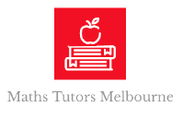|
Mathematics has a specific language, and students must learn and understand it so they can apply this knowledge when solving mathematical problems. Therefore, students must be able to interpret this language in a range of mathematical contexts before they can develop a deep understanding of it.
There are three required types of vocabulary that students need to be able to solve word problems, and these will include the following:
It is essential for students to explicitly learn these types of vocabulary since it will give them the proficiency to move between written, symbolic notation, oral language, and graphs and visual displays. This will develop their familiarity with mathematical grammatical patterns, use of synonymous verbs, logical relationships. How to effectively develop an understanding of mathematical language There are various strategies that teachers can use to develop the literacy and understanding of their students when it comes to mathematical language. These will include:
That is why teacher-led discussions must be implemented because this will provide students the opportunity to read worded problems and identify which words can be translated. However, it is important for teachers to explicitly share their thinking and decision-making as they identify crucial mathematical translations and how this translation should be done.
Using the power of storytelling and narrative to bolster students’ insights In math classes, students usually approach challenging word problems by annotating, reading, and writing to get their meaning. Therefore, students must learn how to break the problems down into smaller parts so they can master difficult concepts. In a classroom setting, teachers must read the problem, then students read and paraphrase the problem. Together, and then individually, the whole class can break problems down, as well as translate them to aide in their interpretation. This method will foster both individual and group learning and bolster their insights. Lastly, the teacher must also provide an opportunity for students to discuss their reasoning since this can enhance their understanding of the mathematical language, and point out some misconceptions that the teacher can correct along the way. As educators, our tutors have a good understanding of maths literacy and how to help students learn and apply associated skills. Learn more about our remote tutoring options Comments are closed.
|
AuthorWrite something about yourself. No need to be fancy, just an overview. Archives
June 2024
Categories |
|
Maths Tutors Melbourne |
